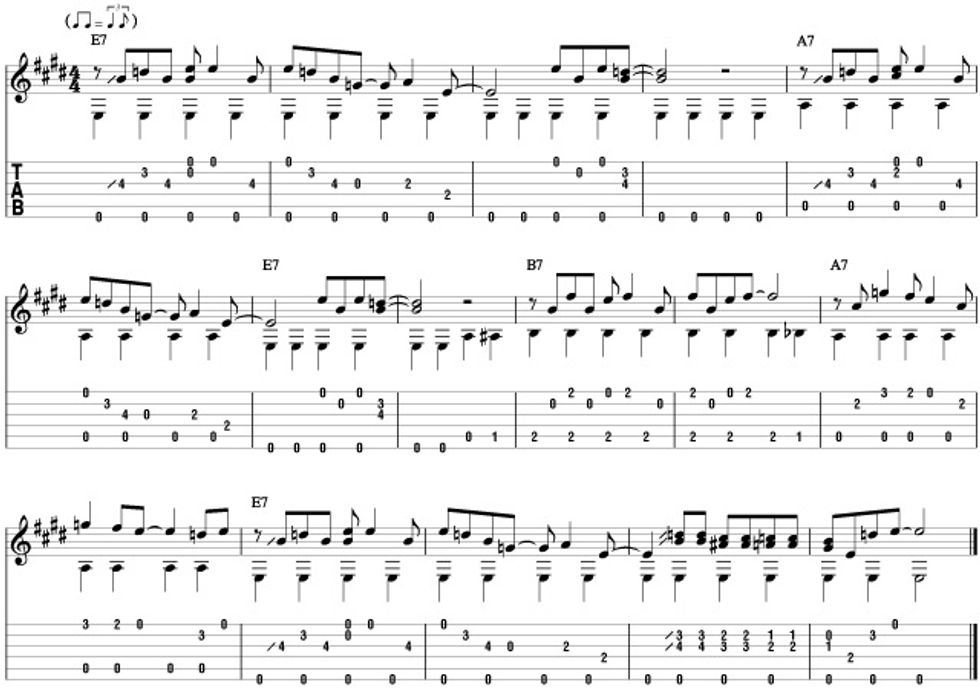“Low Bass Blues” is based around a popular sliding blues lick at the third fret. Slide into the fourth fret of the third string with your middle finger
and follow that up with your index finger on the third fret of the second string:
There are so many ways you can use this lick. Here’s one way that uses triplets and slides back down to open position on the last beat, which is
another common addition to this lick:
Download Example Audio
In “Low Bass Blues,” we’ll slide into this lick and leave our fingers on the fourth and third frets throughout the first one-and-a-half measures. To
get that first measure to work, you’ll have to lift your index finger off of the second string on beat 3, and then put it back at the start of measure
2, where you’ll need to play the third fret. The open third string on the “&” of beat 2 in measure 2 gives you time to move your hand down to
open position to grab the notes on the second fret. Then, you can bring your hand back up as you play the open strings in measure 3, letting it
float above the frets until it’s time to play those notes at the end of the measure.
Over the A7 chord, we’re playing the exact same licks, with one exception—that second-fret C# note on beat 3 of measure 5. To grab this note,
you’ll need to quickly slide your index finger down from the third fret and then bring it back up to play the note on the third fret in the next measure.
This is a bit tricky to play, but if you slow it down, you should be able to get the hang of it. Feel free to slide both your index and middle
fingers down a fret, so that you don’t have to stretch too much.
Notice how the bass line walks into a few of the chord changes. In measure 8, move up to the A string on beat 3, and move through the open
string and first fret to reach the second-fret B note at the beginning of the next measure. In measure 10, you walk back through the first fret on
beat 4 to reach the A bass note in the next measure.
The rest of the song doesn’t throw too many tricks at you, except for the turnaround in measure 11. A turnaround is a figure used at the end of
a progression to either wrap things up or lead things back to another repeat of the progression. Here, we’re using a common trick that takes our
two-note shape and slides it down one fret at a time until we reach the open position, at which point we finish with an E7 chord.
Download Example Audio
This lesson comes from:
Total Acoustic Guitar
Search
Latest Stories
Start your day right!
Get latest updates and insights delivered to your inbox.
Premier Guitar features affiliate links to help support our content. We may earn a commission on any affiliated purchases.
The Latest
More for you
Most Popular
Don’t Miss Out
Get the latest updates and insights delivered to your inbox.


















